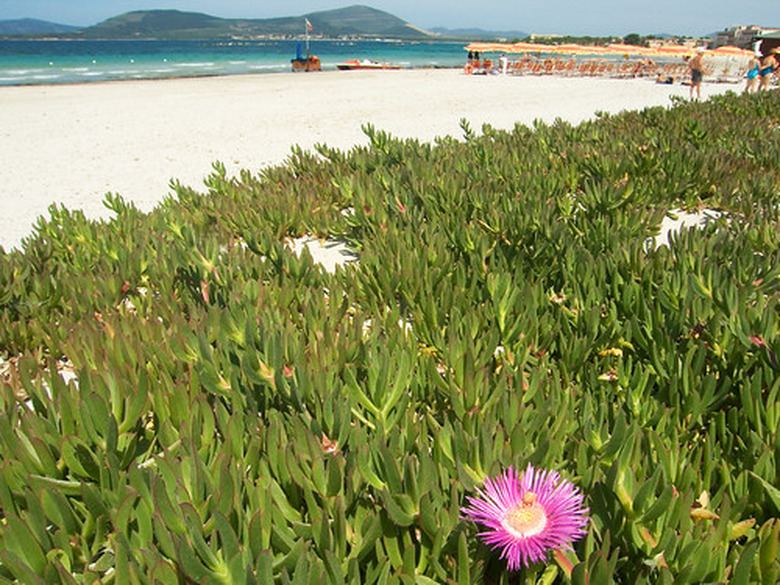Why Is The Ice Plant Bad?
The ice plant, also known as the sea fig, is a species of succulent plant originally from South Africa. This plant was first used in the United States to stabilize roadsides and riverbanks—and is also popular for landscape applications as an ornamental plant, producing bright yellow or pink flowers. While the plant has its uses, it does pose a threat to native species, making it bad for the ecology of the area it inhabits.
Areas Affected
In southern and central California, the ice plant is a problem and grows along the beaches and chaparral of the Pacific coast. This plant has also been identified in an isolated area within the Redwood National Park.
Species Exclusion
Growing quickly, the ice plant dominates areas where it becomes established. In the process, it out-competes and eliminates native species. In particular, the ice plant displaces three very sensitive plant species including Wolf's primrose, pink sand verbena and beach layia, which is on the federal list of endangered species. The plant is so invasive, it can significantly reduce the biodiversity within a given area. It also invades areas that have been cleared by fire faster than other species.
- The ice plant, also known as the sea fig, is a species of succulent plant originally from South Africa.
- While the plant has its uses, it does pose a threat to native species, making it bad for the ecology of the area it inhabits.
Dune Development Interference
Because the ice plant grows so prolifically, it can literally cover entire beaches. It also stabilizes sand dunes prematurely, preventing the sand from moving freely. This alters the ecosystem, preventing larger, more protective dunes from forming properly. This can lead to erosion behind the dunes and more plant species being threatened.
Rapid Propagation
The ice plant grows very quickly, producing large, spreading mats. It flowers prolifically and the seeds disburse easily. The plant also reproduces vegetatively. Even small pieces of the plant broken off roots and grows easily—making control extremely difficult.
- Because the ice plant grows so prolifically, it can literally cover entire beaches.
- Even small pieces of the plant broken off roots and grows easily—making control extremely difficult.
Eradication
The physical elimination of the ice plants by pulling and mulching is a laborious, time-consuming process, that has had limited success, because of needing to remove all fragments of the plant to prevent re-emergence. While glycophosphate-type herbicides do kill the ice plant, they can also negatively impact nearby native species. Chlorflurenol has been successfully used to eradicate the ice plant along roadsides. Biological controls, such as verticulum wilt can cause significant damage to the ice plant, and recently introduced scale insect species that feed on the ice plant are also being tried. The relative ineffectiveness of these eradication methods, however, makes the ice plant a continuing problem.
